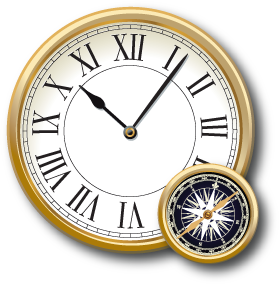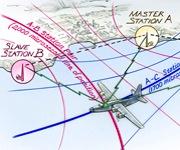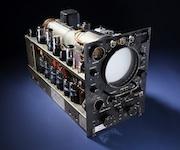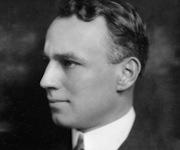In World War II, navigators began switching from mechanical time to frequency-based time systems.
In 1940, British scientists and engineers developed GEE—a practical medium-range (up to several hundred miles) system of radio navigation based on measuring the time-delay between sets of radio signals. The United States built on this effort and created a longer-range system called LORAN (LOng-RAnge Navigation) to provide oceanic coverage for ships and aircraft.
Although initially no more accurate than celestial navigation, LORAN had a big advantage: it worked when the sky was clouded over. And during the day, when sextant Sun “shots” could only provide a line of position, LORAN gave a precise fix. GEE and LORAN were essential tools for American and British forces in World War II.










